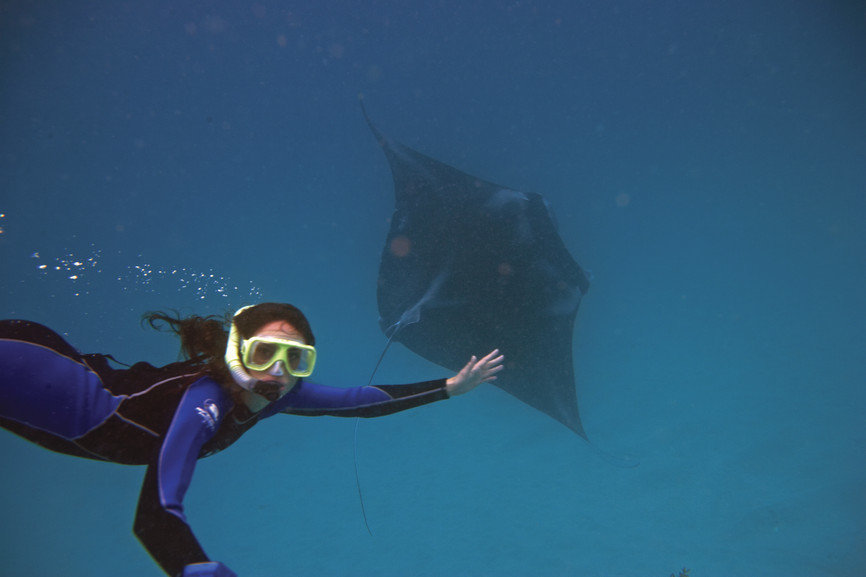
Snorkelers and divers are often taken to a second nearby site, where water depths range from four to eight feet, and the rays are joined by a colorful assortment of reef fish.

In the first area, the water is as shallow as two feet, giving participants of all ages a chance to wade and feed the rays. Encounters begin with a half-hour boat ride across the sound, and there are actually two sites that the tour operators visit. Fast forward 45 years and Stingray City has become one of the Cayman’s signature experiences. Every year tourists spend an estimated US140 million to see manta rays in the wild.As a result, tourism can form part of the solution to combating the issue of global manta fisheries, providing many countries and governments with a strong economic incentive to protect these animals. This soon attracted the attention of the resident stingray population, and within a few years, dive masters were bringing tourists to the site to snorkel with the rays. Few experiences can top diving or snorkeling with a manta ray. In the 1970s, local fishermen would stop to clean their catch over a sandbar in the sheltered waters of North Sound. Grand Cayman’s world-famous Stingray City happened by accident. Some programs are little more than marine petting zoos, but the best allow humans to interact with rays in a natural setting, and get to know these surprisingly gentle sea creatures.

What began more than three decades ago in the Cayman Islands has now spread to locations across the region. Once considered a novelty, swimming with stingrays has become one of the Caribbean’s most popular aquatic animal encounters. Tourism Australia does not endorse or accept any responsibility for the use of websites which are owned or operated by third parties and makes no representation or warranty in relation to the standard, class or fitness for purpose of any services, nor does it endorse or in any respect warrant any products or services by virtue of any information, material or content linked from or to this site.Five top spots where humans and rays meet in a natural setting Some websites which are linked to the Tourism Australia website are independent from Tourism Australia and are not under the control of Tourism Australia. Tourism Australia makes no representations whatsoever about any other websites which you may access through its websites such as. All prices quoted are in Australian dollars (AUD). Please visit the operator’s website for further information. Rates are indicative based on the minimum and maximum available prices of products and services.

Information on listed products and services, including Covid-safe accreditations, are provided by the third-party operator on their website or as published on Australian Tourism Data Warehouse where applicable. *Product Disclaimer: Tourism Australia is not the owner, operator, advertiser or promoter of the listed products and services.

Meanwhile, in the sea surrounding Lord Howe Island, off the New South Wales coast, you’ll find a proliferation of green, hawksbill and loggerhead turtles in the shallow lagoon, protected by the world’s most southern coral reef system. Suffice to say, it’s a turtle-fest in this part of Queensland, and catching a glimpse is not difficult during a snorkel or swim. Heron and Wilson islands are equally important nesting grounds for greens and loggerheads. Green and flatback turtles also hatch and nest here, then flipper around the waters at nearby Lady Elliot and Musgrave islands. Mon Repos, near Bundaberg, is the largest nesting ground for the endangered loggerhead turtle in the South Pacific. When: Year round on the Great Barrier Reef nesting November to January, hatching January through to March visiting Lord Howe Island, September to April Where: Great Barrier Reef (Mon Repos, Lady Elliot Island, Lady Musgrave Island, Heron Island, Wilson Island), Southern Great Barrier Reef, Queensland Lord Howe Island, New South Wales


 0 kommentar(er)
0 kommentar(er)
